So I decided to step back and talk about something that has been on my mind lately. For quite some time now, I’ve been hearing a lot of language that seems to condense and limit the ways in which people play, acknowledge, and understand the game. As a certified language instructor, I can assure you that the words and choice of jargon that you use can dramatically affect how others perceive you and as such, the game itself.
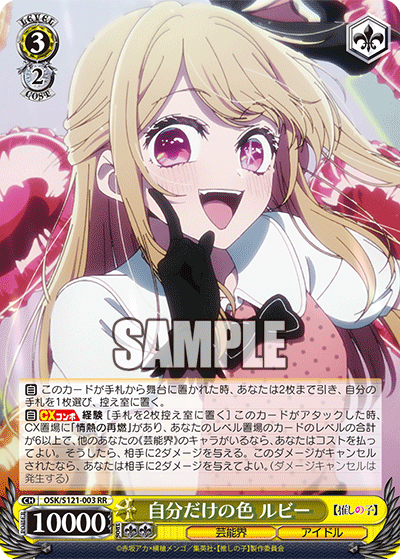

I want to begin by explaining more about myself and my philosophy and approach to the game. Now, as you may experience this, as you speak to different members of the community, you’ll find individuals who are convinced that deck-building is essentially solved. Personally, I hate that term; for something to be “solved”, there must be a problem to begin with. Deck-building, in my opinion, isn’t a problem; it is in itself a revolving game.
For the typical competitive list you may see online, you’ll come across some sort of assortment of the following with changes in ratios and some slight substitutions:
- 4x Riki Profile
- 4x Riko Profile
- 3-4x Brainstorm Profile
- 1-2x Drop Search/Drop Salvage Profile
- 1-2x Climax Swapper Profile
- 1x Anti-Change Profile
- 0-1x Adachi Profile
- 4x Early Game Advantage Combo
- 4x End Game Advantage Combo
- 1x Fumio/Stock Shuffle/Stock Flush Profile
- 1-2x Off-Finisher
To them, deck-building is less about actual building and more of fulfilling a checklist. Profiles, more commonly known as staples, are necessary pieces that are required for every deck to function rather than being more selective in nature. Now, I’m not against players building with staples. Many of these cards carry universal utility that is good all around such as filtering abilities, mill, or ways to get hand beyond just your combo. My problem is that rather than being a suggestion, players are looking to build with staples first and then their actual deck second.
Essentially, this turns many cards in a series into a basic shell which everyone then substitutes a couple handful of cards into which is then called a “new” deck. The problem with this is by doing so, players invalidate many other cards from the same series, dismissing them without giving these cards the opportunity to see the light or try out specific synergies, synergies that they could be missing out on which provide either added consistency or some truly cool or fun effect.
Personally, as you can see from my site, I’m looking to build around archetypes and specific synergies. I want to remind my readers that I am not opposed to using “staples”, but I do think that there are no universally good cards that are necessary in every deck. I think staples should be tailored to the deck you are building and not the other way around.
In real practice, from my own experience, my games generally go 50/50. That is to say that with my archetype-based decks, my win rate is generally hovering around the middle mark. Now, sometimes I do wish for a more generic-based effect in a staple, but other times I don’t. With modern series, I feel like I’m rarely missing out on any effect since there are so many different cloned copies of these profiles even within the same series. Many of which are also archetype focused as well.
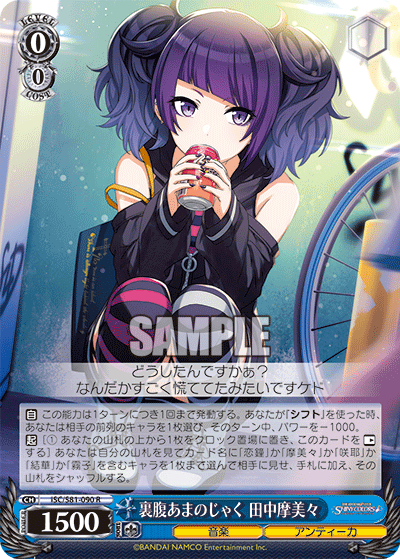

ISC/S81-053RR ジャンプ!スタッグ!!! 芹沢あさひ (right)
To give you a visual example of this. I own two Shinym@s decks (Idolm@ster Shiny Colours for reference) with my band decks, L’Antica and Illumination Stars. I’ve also had these decks long before the release of Shine More! (the last booster as of this post). I had someone locally question why I wasn’t playing the globally used Asahi on the right that is found in every “meta” Shinym@s list. For my deck of L’Antica, it doesn’t really makes much sense in my opinion. Asahi is a Riki profile and searches up any level one or lower character. Mamimi is a Takitsubo profile that can fetch any character from the L’Antica sub-unit. Since my deck was all L’Antica anyways, Asahi would essentially be a downgrade. Furthermore, Mamimi had core synergy with the SHIFT and ALARM mechanics that L’Antica used.
The argument for Asahi drifted towards the fact that she would also gain a marker for compression and could beat over most cards during my turn, but there are far better cards that I can run in L’Antica to do the same thing. Furthermore, unlike Asahi, Mamimi can be used every turn since her search ability is a tap effect that resets during upkeep phase. The person seems a bit disgruntled as they left to speak with someone else.
I mean this interaction is just to showcase two things: how sometimes there are cards that exist that are better than generic cards when used for select builds and a secondary lack of card knowledge. While the former may be obvious, I don’t intend for the latter to be negative or condescending as if I’m trying to impose my knowledge over others. I have also worked on this site for over three years, so my typical knowledge of series and what cards they may contain, however niche, is usually higher than the average person. I’m not flexing my knowledge; from experience, I find many people are unaware of many cards that exist within their own sets. And the reason for this I’ve found is quite simple: they are constantly referred to netdecking with little nuance. As such, many players, both old and new, just come to the card shop with a shiny new sleeved deck and just playing the “best build” they’ve found online.
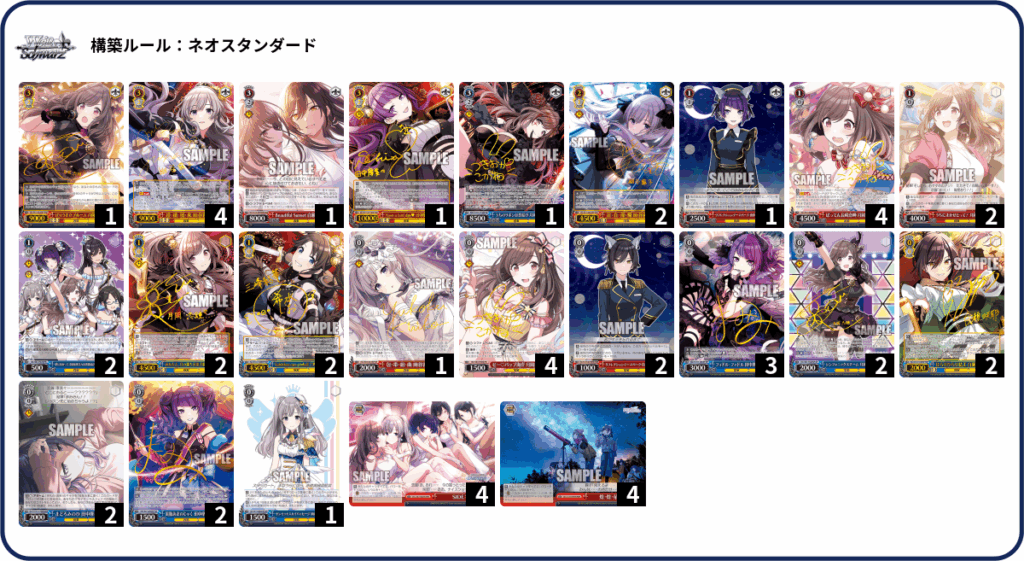
There is also a persistent thought in the community where supposed pure archetype decks are generally garbage and relegated to just casual formats. Above is my personal decklist for my L’Antica deck. At first glance, you may not have any idea what these cards are, especially if you do not know the series.
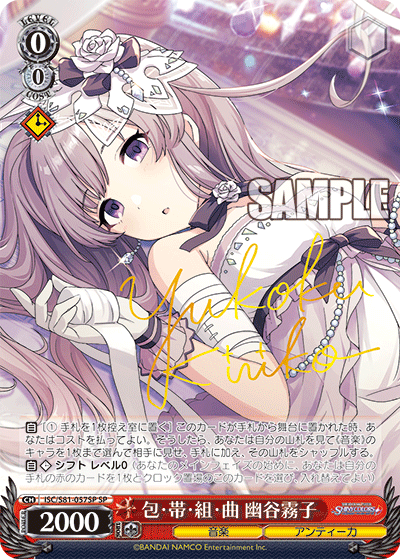
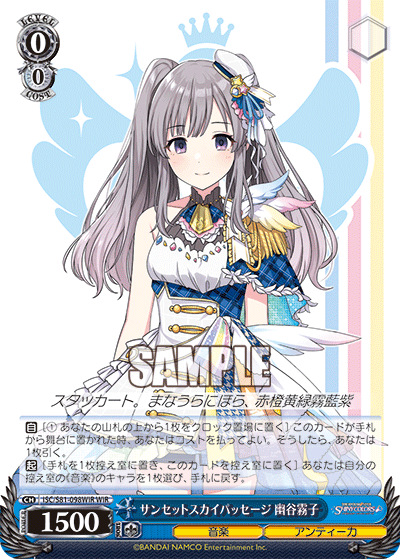
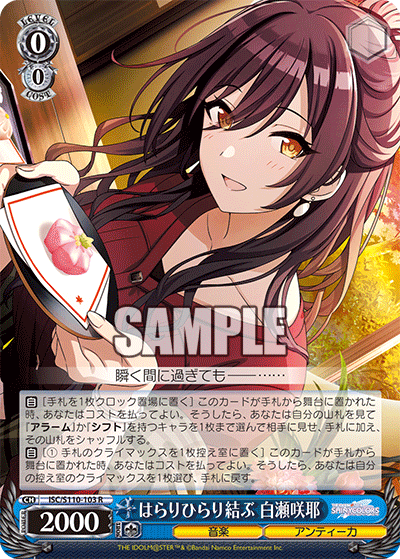
ISC/S81-098WIR-WIR サンセットスカイパッセージ 幽谷霧子 (center)
ISC/S110-103R はらりひらり結ぶ 白瀬咲耶 (right)
Now this may surprise many, but the archetype itself contains many commonly used profiles. Kiriko on the left is a drop search profile with level zero shift (especially good for L’Antica’s SHIFT and ALARM gimmicks). Center Kiriko is a Helmet profile with an additional draw Riki ability. Lastly, Sakuya on the right is a climax swapper with a clock from hand ability to search your deck for any character with the subtext of ALARM or SHIFT to hand. In some ways, these cards could be even better than the generic profiles that others would suggest in certain situations, especially when used in conjunction with the archetype deck’s mechanics and core gameplay.
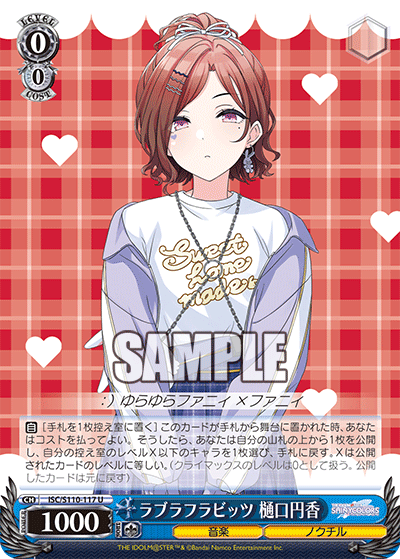


ISC/S81-T103R-RRR クリアマリンカーム 市川雛菜 (center)
ISC/S110-099RR セピア色の孤独 福丸小糸 (right)
I apologize for all the above just so being Noctchill cards. These profiles above could be ran in my deck with little to no cohesion. But there’s just no need for me to do so. I want to begin by discussing Hinana in the center and Koito to the right. Hinana is a drop search profile when she’s reversed and sends herself to memory. Memory, for many players, is considered to hold a lot of value. Here’s something I want to correct here. Value is subjective. Even though memory is typically considered valuable universally since it permanently compresses a card from your deck, in a deck like L’Antica, Hinana isn’t particularly useful. As L’Antica’s deck revolves around its keyword mechanic, Hinana doesn’t do much to push the gameplan and the memory advantage is too minimal to consider. Furthermore, she will fail 0/0 Mamimi’s search condition on top of needing your opponent to reverse her for a delayed search. For Koito, whom universally sees play, she doesn’t really impact L’Antica at all. My deck doesn’t need her double trigger ability and memory isn’t something that my deck is contingent on nor cares about.
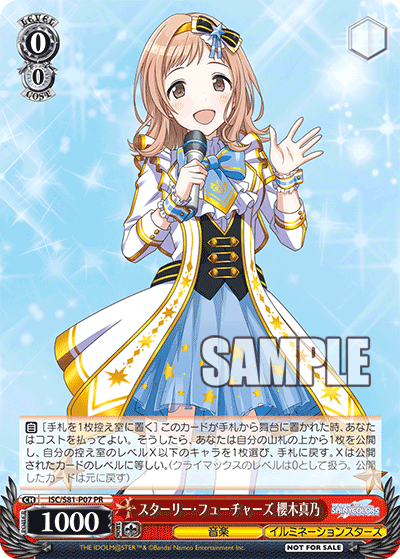
I want to make a special case for Madoka here with a beginning image of Mano. Yes, for all those who are skeptical, this is a real card. I, in fact, own and run several copies in my own Illumination Stars deck. This was a PR card that was only released in Japan in select tournaments. I got my hands on it through the power of magic. And yes, I will continue to run these PR cards to make headaches for the translation team during WGP for Heart of the Cards.
The reason I showed off Mano is to share that there are many clones of many generic profiles. And sometimes, in the case of Mano, it is a literally direct clone of the Riko profile shared by Madoka. Riko profiles are equally universally loved and hated. It’s a generic profile that acts as a free discard outlet that also returns hand (usually a level zero due to most deck building ratios) while also giving you top deck information. In L’Antica, it’s a nice effect, but my deck is not contingent on grabbing level zero characters. Since Riko mainly hits level zeros due to my ratios and general deck building math, it’s just a mediocre card in my deck. But for my Illumination Stars, Riko is necessary to discard my standby targets on top of potentially netting me other higher level cards due to my increased level one or higher card ratio.
Someone had asked before if I would run Madoka for my Illumination Stars deck, but that doesn’t make much sense to me either. I already have Mano, and given that the majority of my deck is red, especially in the early game, Madoka is a strict downgrade. The one merit and reason for Madoka is that my deck does need three colours in level including blue for my finisher Hiori. However, I have plenty of other more useful cards to run than extended copies of a Riko profile.



OSK/S107-004SSP-SSP “B小町”有馬かな (center)
OSK/S121-024R-RRR 情熱の再燃 (right)
Now moving onto another point, I want to discuss the terms of correct and incorrect. Referring back to the sample above with Ruby (Ruby is better than Kana, fight me), I had a talk with others where people would try to explain to me that in terms of the yellow build, Kana is a strictly better card than Ruby. When asked why, they would explain to me that Kana is the correct play. When pushed further, the end reasoning was more or less this: Japan values Kana more than Ruby.
Okay, so I’m just going to address the elephant in the room. There are far too many individuals who idolize and act to the point of potentially “worshipping” Japanese builds. I want to demystify this here and now by saying that Japanese builds aren’t perfect nor should you be constantly looking to replicate them. I know speaking past this leads to sensitive topics, but I am not here to debate that type of “discussion” if you are looking for that. I am going to openly state that this is not a discussion of ethnic superiority or anything like that. If you are looking to debate that, please kindly take your discussion elsewhere.
There are many reasons why you should not simply replicate Japanese builds. Japanese builds, as the name suggests, are literally tailored to Japan. That is to say, these decks are built to play against local individuals in Japan who may play very differently from your local group here in the West. Their meta is different; heck, their game is even different. And I want to remind you here and now, despite the fact that some series are shared, English Weiss Schwarz and Japanese Weiss Schwarz are two separate games. You should always be catering your deck to play against your local opponents. Certain cards or profiles are more valued there due to meta matchups or the generally considered slower and less explosive gameplay overseas.
In general, some of their builds often also take riskier plays with cards that would be considered bricks. But they are acknowledging that and will play along with those bricks. You do not need to incorporate these bricks. These cards are innately fail targets that will make your gameplay less smooth, but these players embrace this knowing that they are taking these risks. That is to say, all-in-all, the Japanese playstyle and game environment are different, so you should be always considering Japanese deck builds with a grain of salt, especially if you live outside of the SEA region.
So I had to begin with that spiel to better breakdown the logic behind the terms “correct” and “incorrect.” Often, people throw these words around in some corrective measure, trying to direct the other players to “better” plays that they’d consider to be good. Now, there are circumstances where there may generally be a “better” play or as much as I would like to admit, the “right” play, but Weiss is a game of chance and circumstance. Many of the cards that you play are reliant on certain RNG elements and due to the trigger and damage system of the game, game states and board states can rapidly change. What I’d like to share is that even if one were to do the “right” play, the end result may not mirror that exact choice. Does that necessarily mean that you should not do “good” plays? No, it means that you have to realize that many plays in Weiss are like a choice in a forked road with several different possibilities. You have to choose one of these roads and continue down that path while making other choices. You may do one play that is seen as “incorrect” but end up with a good result due to certain risk taking and whatever happens next. The opposite could be true as well. This is for a player to gauge, observe, and note their plays and results, changing their thought process and making more educated decisions the next time this type of situation comes around.
Commonly, one big issue is when players call out others’ plays or cards with these simplistic and generally meaningless terms. Rather than trying to observe something as “correct” (proper) or “incorrect” (improper), it is more important to evaluate the situation and discuss both the thought process and results of these decisions. Players should be looking less to “correct” and more of educate. These two terms are not mutually exclusive.
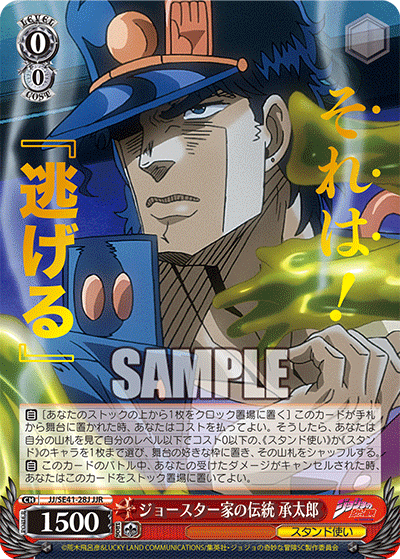
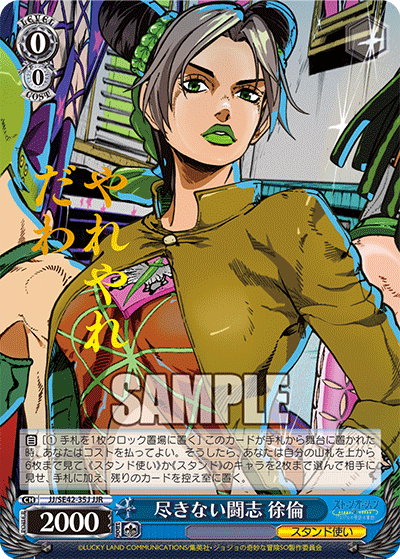
I think the last terms I want to discuss are that of optimal and sub-optimal. Weiss Schwarz, like any other card game, is contingent on consistency to facilitate your game plan. Given there is resource management in this game, people are constantly discussing on what you should do to optimize your plays and thus your resources as well. Firstly, let’s breakdown what “optimal” means. The word means to make something more efficient or consistent. Optimal is often tied with “better” much like our previous section with the wording of “correct.” However, once again, I want to remind players that everything is always based on circumstance.
There are some situations in which, due to ulterior factors, you’ll have to take a sidestep and play sub-optimally. This is just reality. Things happen, and that’s understandable. What I cannot stand is when players are reminding and calling each other out for playing “sub-optimally” and being inefficient with their resources. This doesn’t really make sense logically speaking when every deck varies in its costs and ways it facilitates their own game plan. For some reason, players seem to be very self-righteous in their mindset on deciding what should happen and is essentially guaranteed each turn. When the plan falls apart, they panic and then they start fretting and the most extreme of players will begin to take out their frustration on others.
Efficiency itself is a weird word. The basis for efficiency is the categorization for which you consider to maximize potential for. Take the example above of Jotaro (left) and Jolyne (right). Both are Riki profiles but with some differences. Jotaro spawns a character from your deck that is cost zero equal to your level or lower while Jolyne clocks a card from hand to let you check up to the top six cards of your deck and add two characters in addition to their other costs. For many players, when I bring up these two cards, without even blinking an eye, they will say that Jolyne is a strictly better card in most scenarios. While potentially true, Jolyne could technically mill out all your climaxes or draw you into worse cards that you do not want in hand. Jotaro is more simple as he doesn’t mill, but he restricts his spawn to select cards. What I’m trying to say is that both fulfill very different niches. There isn’t a “optimal” play here unless you are looking for a specific category.
If you want that mill and you need targets in waiting room, Jolyne would generally be much better than Jotaro. However, if you just want to spawn a card from deck and not necessarily mill yourself, Jotaro is great. Jolyne also requires you to clock a character from hand, something you may not want to do. Jotaro just uses your last triggered stock. Jotaro also has an added benefit of potentially refunding his stock cost with his second ability that is a bit RNG, but the potential exists. As you can see now, it’s not necessarily possible to simply term either Jotaro or Jolyne as the more optimal card to play. It really depends on the situation and what your deck’s game plan is.
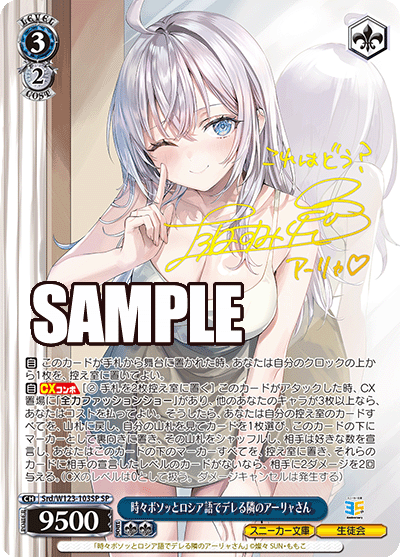
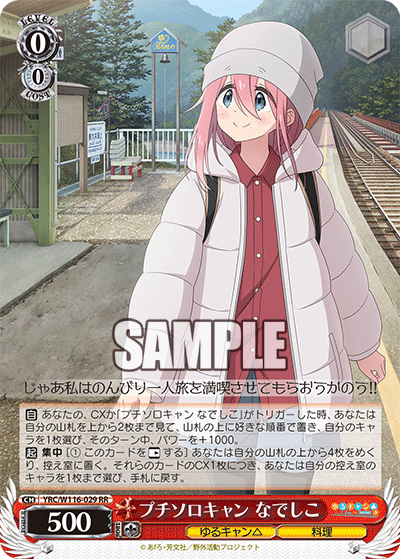
YRC/W116-029RR プチソロキャン なでしこ (right)
The final note I want to mention is on that of the constant battle between classifying decks by tiers and more importantly and egregiously: competitive or casual. I am not really going into a deeper debacle here, and I may consider this in another post. However, I’ll just put it bluntly. This is just rude behaviour and really has to change.
I see this more from the competitive side honestly, but that may be due to the nature of the community where I live. However, players need to stop calling anything they don’t see on netdecking or Twitter as essentially “casual” builds. Competition has its own nuances and there’s a lot to talk about there. I won’t go into the details on what is defined as “competitive”, but people need to stop labelling others’ and even their own non-meta decks as casual garbage.
It is very dismissive and connotes a poor image and attitude of the game, especially harming new players who are unaware of the game’s mechanics. Now I don’t really care if you play competitively, casual, or a mix, but these categories which are often used (regrettably I am part of this too) make it appear that decks are either built to be serious (competitive) or are literal jokes/trash (casual). And the more jarring issue is that players transfer the labels of these decks onto literal players as well. Meaning, if a player were to play a “off-meta” deck in a tournament, they could be considered as “trolling” or “killing the competitive spirit.”
It is not your business as to what others play. And I think, in a cathartic and “sweet justice” sense, when these “off-meta” players win, some of the competitive players become salty because as they say, they lost to a “tier four deck” while they’re rocking what is supposedly the best. Some of the more discriminatory things I’ve heard is that the winning player didn’t deserve the win regardless of circumstances. Or simply, the other player got lucky and has no skill. Either way, these comments are undeserved, degrading, and unacceptable. And part of this is drawn from how players are constantly categorizing series and decks in these tiers between trash and good.
So let’s be clear here and start changing our vocabulary while reconsidering our view of the quality of decks. No deck is ever trash. I think a common misinterpretation is that older decks, especially, are just out of date. They don’t compete well in the modern competitive environment, but that makes sense. They weren’t designed to. The other common variety of decks comes in those that are just not the meta build. I don’t believe meta builds should perpetuate over time. What I mean by this is that overtime, as metagames change, your deck should as well. What was good in a deck six years ago may not be relevant today, and maybe some other cards may have become more valuable as a result.
What I dislike the most is when people call anyone and the deck they play using less commonly play finishers, combos, and profiles as trash just because it doesn’t fit their narrative of meta compatibility. They believe decks should be relegated to a single build in order to be taken seriously, and as a result, players who are doing otherwise are also named as trash. I don’t care how you play or what your mentality is, but please stop treating others poorly just because they don’t meet your mentality for what is competitive viability. Also, not everyone wants to play competitively or meta.
Side note: I find it ridiculous when someone is considered to be “experimenting” when they change out a handful of meta profiles in a meta deck. It’s like calling someone a water connoisseur for changing their Dasani tap water with Aquafina tap water. You haven’t experimented; you literally just swapped like one or two cards and just label your deck as new and innovative. Get off your high horse.
Instead of comparing relative strengths like the typical pointless shounen power level exchange, admit your deck for what it is. If you are playing a deck from six years ago with no support, you should try to play an opponent with a deck from around that same time or scaled to relative power (you two decide this). Your old decks are what they are, old (like me). Your decks that don’t use the commonly used profiles and most used finishers are your x deck. They’re what they are, so embrace it. Every deck is “playable”, but it may not be the best suited for every environment.
Some people do take offence when you call their decks “trash”, even if you mean so in a lighter sense. And the term “playable” implies that any deck that doesn’t fit that term is “unplayable” and therefore relegated as trash. These words also insinuate that the respective player and their decks are seen as dumb, casual (which has been relegated into a slur when it shouldn’t be), and wasting their time. People can do much better than this and create a kinder, more inclusive environment for all through even just small slight changes with their choice in words.